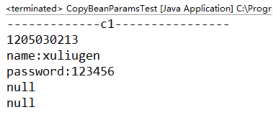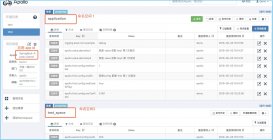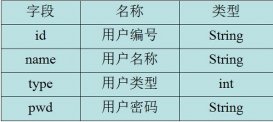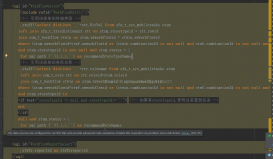java中VO的使用
场景
现在我们需要从数据库中查询用户列表t_user,对应的实体类如下:
|
1
2
3
4
5
6
7
8
9
10
11
12
13
14
15
16
17
18
19
20
21
22
23
24
25
26
27
28
29
30
31
32
33
34
|
import io.swagger.annotations.ApiModelProperty;public class User { @ApiModelProperty(value = "用户id") private String userId; @ApiModelProperty(value = "用户名称") private String name; /** * 状态参考 UserStatus */ @ApiModelProperty(value = "用户状态 1已认证,2 认证中,3未通过认证,7未提交认证") private Integer status; @ApiModelProperty(value = "头像地址") private String headPicFileName; @ApiModelProperty(value = "手机号") private String telephone; /** * 用户级别 0到期 1游客 2临时用户 3认证用户 参考health com.dachen.health.commons.vo.User */ private Integer userLevel; @ApiModelProperty(value = "医生信息") private Doctor doctor; get/setXxx().... @Override public boolean equals(Object o) { if (this == o) { return true; } if (o == null || getClass() != o.getClass()) { return false; } User user = (User) o; return userId != null ? userId.equals(user.userId) : user.userId == null; }} |
但是前端页面需要展示更多个关于用户的消息,如用户的角色Role,而User实体类中的信息不全,为了返回更多的信息,
有两种做法:
- 1.直接在user类中添加需要的信息属性
- 2.创建一个新类UserVO extends User,只在UserVO中添加更多属性,而且以VO结尾表示用于返回前端的数据
如果采用第一种做法,User类可能会越来越大,也不方便后期维护,而且User类作为对数据库表的映射,添加冗余的属性反而会破坏这种映射关系,采取第二种方法,更加清晰明确.
现在采用第二种方法,假设从数据中查出user列表:
|
1
2
3
4
5
6
7
8
9
10
11
12
13
14
15
16
|
List<User> users = userServiceImpl.findUsersByIds(userIds);//将User列表转换为UserVO列表:List<CircleUserVO> circleUserVOs=BeanUtil.copyList(users,CircleUserVO.class);//给UserVO添加角色属性wrapRole(circleUserVOs,circleId);wrapRole(List<CircleUserVO> circleUserVOs,Long circleId){ //所有角色权限 List<CircleUserVO> circleUserVOList = circleMemberRoleMapper.selectAllMemberRoleByCircleId(circleId); for (CircleUserVO circleUserVO:circleUserVOList){ for (CircleUserVO circleUserVO1:circleUserVOs){ if(circleUserVO.getUserId().equals(circleUserVO1.getUserId())){ circleUserVO1.setRole(circleUserVO.getRole()); } } }} |
|
1
2
3
4
5
6
7
8
9
10
11
12
13
14
15
16
17
18
19
20
21
22
23
24
|
package com.dachen.circle.model.vo;import com.dachen.circle.model.inner.User;import io.swagger.annotations.ApiModelProperty;public class CircleUserVO extends User{ @ApiModelProperty(value = "在该圈子的角色1:管理员 2:圈主(负责人)3:顾问 逗号拼接 多个角色 可同时为管理员,圈主,顾问") private String role; @ApiModelProperty(value = "0否 1是 永久免费") private Integer permanentFree; @ApiModelProperty(value = "1正常 2欠费") private Integer arrearageStatus; @ApiModelProperty(value = "过期时间 月数") private Integer expirationMonth; @ApiModelProperty(value = "医院名称") private String hospital; @ApiModelProperty(value = "科室") private String departments; @ApiModelProperty(value = "职称") private String title; @ApiModelProperty(value = "简介") private String introduction; @ApiModelProperty(value = "排序字母 A-Z Z1为#") private String letter; get/setXxx(); } |
|
1
2
3
4
5
6
7
8
9
10
11
12
13
14
15
16
17
18
19
20
21
22
23
24
25
26
27
28
29
30
31
32
33
|
package com.dachen.util;import org.springframework.beans.BeanUtils;import java.util.ArrayList;import java.util.List;public class BeanUtil { public static <T> T copy(Object poObj,final Class <T>voClass) { T voObj =null; try { voObj = voClass.newInstance(); BeanUtils.copyProperties(poObj, voObj); return voObj; } catch (InstantiationException | IllegalAccessException e) { e.printStackTrace(); } return null; } public static <T> List <T> copyList(List <? extends Object> poList ,final Class <T>voClass){ List<T> voList=new ArrayList<T>(); T voObj =null; for(Object poObj:poList){ try { voObj = voClass.newInstance(); BeanUtils.copyProperties(poObj, voObj); voList.add(voObj); } catch (InstantiationException | IllegalAccessException e) { e.printStackTrace(); } System.out.println(voObj); } return voList; }} |
java里VO是什么
1、PO:persistant object 持久对象
可以看成是与数据库中的表相映射的java对象。使用Hibernate来生成PO是不错的选择。
2、VO:value object值对象
通常用于业务层之间的数据传递,和PO一样也是仅仅包含数据而已。但应是抽象出的业务对象
可以和表对应,也可以不,这根据业务的需要.
有一种观点就是:PO只能用在数据层,VO用在商业逻辑层和表示层。各层操作属于该层自己的数据对象
这样就可以降低各层之间的耦合,便于以后系统的维护和扩展。
如果将PO用在各个层中就相当于我们使用全局变量,我们知道在OO设计非常不赞成使用全局变量。
但是每次都得进行VO-PO的转换,也确实很烦。我觉得有时候也可以在某个商业逻辑或者表示层使用PO
此时在这个商业逻辑的过程中PO的状态是不发生变化的,比如显示一条商品详细信息的商业逻辑。
在开发过的项目中,规模都很小,我一直都把PO当VO用,因为PO确实很方便,结合Hibernate的DAO
我使用JAVA的集合对象作为值传递的载体,当然Struts也是我的不二之选。
我认为:在一些直观的,简单的,不易发生变化的,不需要涉及多个PO时,传递值还是使用PO好
这样可以减少大量的工作量(也就意味着减少bug,减少风险),也不需要担心未来的维护工作!
vo:value object,值对象
一般在java中用的多的是pojo:plain oriented java object
原始java对象,pojo一般和数据库中的表是一一对应的。
vo一般是来做值的存储与传递。
以上为个人经验,希望能给大家一个参考,也希望大家多多支持服务器之家。
原文链接:https://blog.csdn.net/G0_hw/article/details/78326359

















